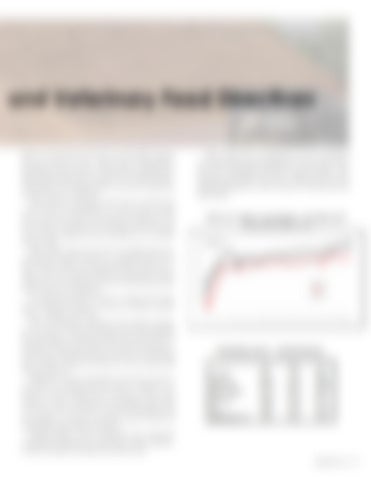and Veterinary Feed Directives dicted. Not all cattle of the same sex and weight consume the same amount of feed. Chart 2 shows the population distribution of feed intake for 750 lb heifers or 850 lb steers. These bell-shaped curves are typical of a normally distributed population. The highest point on each curve represents the most common occurrence. Most cattle eat around the average amount. But the tails of the curves are meaningful, too. Some cattle eat much more or less than average. For example, consumption of 26 lb is far above average and near the upper end of the steer curve but that single data point still represents over 26,000 head of cattle. This normal variation must also be considered when determining the proper amount of a medicated feed in the diet of cattle. If diets are formulated based on either the average or the most common intake level, cattle that consume much more or less than that amount of feed will not get the correct amount of medication. As if all of the previous sources of variation don’t make feed complicated enough, we will now introduce another source – variation across days. All of the data above are based on the average consumption for a pen of cattle, determined at closeout by dividing the total quantity of feed consumed by the total number of head days. But the cattle did not eat exactly that amount every day, they varied from one day to the next, so formulating diets to deliver medicated feed based on that average could miss the mark, too. Differences in feed consumption across days are due to the process of starting cattle, the increase in weight as cattle grow, normal variation from one day to the next and changes in season (temperature and daylight) while cattle are on feed. On top of that, events like re-implanting and re-vaccination or weather events like storms or heat, can dramatically change feed consumption. Starting cattle on feed is among the most important management challenges for cattle feeders and the nutritionist and veterinarian consultants that advise them.
When cattle arrive at a feedyard, most are not prepared to consume high energy finishing diets so they need to transition from a roughage based diet to a grain based diet. This transition period allows the cattle to adapt, and the rumen microbial population to shift to species of bacteria that can handle grain.
Chart 3
pacdvms.com 13





















